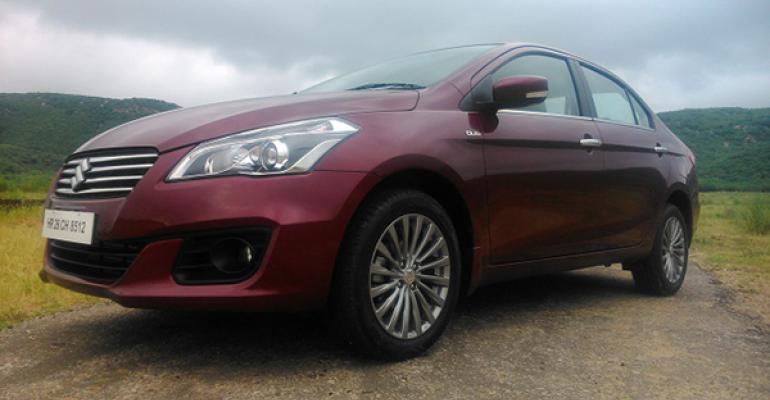MUMBAI – Maruti Suzuki is gathering the low-hanging fruit of rural India’s car market as it reverses several years of falling sales and market share.
Car and light-truck deliveries year-to-date increased 7.4% to 757,636 units, according to WardsAuto data. Maruti’s market share reached 38%, its highest level since the 39.1% mark achieved in full-year 2010.
Growth accelerated in midsummer, as sales jumped 19.4% and 24.4% in July and August, respectively, but the improvement came against weak prior-year results.
India’s No.1 automaker must scrap for sales in urban areas, where Honda, Hyundai and, to a lesser extent, Nissan offer lower prices, wider choice and better quality. But Maruti also has penetrated into the rural interior, where it virtually has no competitors. It has promoted itself in 77,000 of India’s 651,000 villages with 10,000 or fewer residents.
Maruti’s goal is to reach out to 100,000 villages by March and serve rural regions through its 1,300 dealerships. By contrast, 43 of Honda’s 60 dealerships are located outside urban areas.
Under Chief Operating Officer Mayank Pareek, Maruti is developing rural markets energetically. Dealerships feature simple decoration and display, a personal touch and friendly atmosphere.
“Maruti sales in rural areas have gone up from 30,000 (3.5% of its total sales) in 2008 to 280,000 in 2013,” Pareek says.
The automaker in recent months has updated its model range to respond to changing customer tastes and preferences, and to reach out to an emerging new class of younger buyers seeking well-designed, stylish and smaller yet spacious vehicles.
The Celerio hatchback is making waves with its simple, subtle design and responsive engine ideal for city driving. The Celerio became one of India’s best-selling cars within two months of its launch, giving Maruti five models in the top 10. Large numbers of buyers have queued up to purchase the Celerio equipped with automatic manual transmission for just Rs39,000 ($650) extra.
Maruti expects the recently launched Ciaz sedan, which replaces the SX4, to challenge the Honda City and Hyundai Verna both in price and performance.
The Ciaz offers a 1.4L K-Series gasoline engine that generates 92 hp and 96 lb.-ft. (130 Nm) of torque and a 1.3L Fiat Multijet diesel engine producing 90 hp and 147 lb.-ft. (200 Nm) of torque. The gasoline version achieves 49 mpg (4.8 L/100 km) and is priced at Rs725,000 ($12,080) while the diesel turns in 61.6 mpg (3.8 L/100 km) and costs Rs1.05 million ($17,500).
Maruti may produce a compact sedan in 2015, but the automaker needs compact SUVs to build volumes. The replacements for the decade-old Gypsy and Grand Vitara – the new Vitara SUV and two other compact SUVs – are still a year away.
The automaker also is developing new engines and technologies to stay ahead of Honda, Hyundai, Nissan, Renault and Volkswagen. It is modernizing its production lines and increasing its investment in R&D. Parent Suzuki’s first global R&D center is being developed near Maruti’s plant in Rohtak with an outlay of Rs35 billion ($585 million), but that investment appears to be stalled because of failure to secure environmental clearance.
Maruti’s recently released 2013-2014 annual report lays out the automaker’s goals for the next 30 years. The 5-point plan, designated Maruti 2.0, calls for the automaker to increase its R&D capability and significantly increase the fuel efficiency of all its models.
Maruti eventually plans to offer 25 models and sell 3 million cars a year after its Gujarat plant’s capacity is increased to 1.5 million units. Existing capacity at its Manesar and Gurgaon facilities is 350,000 and 850,000 units, respectively. The automaker tentatively plans to increase capacity by 250,000 units at each of those two locations.
“We need such a capacity to keep 25 models on sale,” Chairman R C Bhargava says. “These will involve an additional investment of Rs36.3 billion ($605 million).”
The automaker also is investing Rs25 billion ($415 million) in its K-Series engine plant at Manesar, which will create 2,300 jobs.





